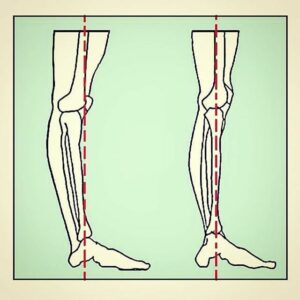Knee Hyperextension: Symptoms, Causes, Treatments, and Recovery Time
Knee hyperextension, regardless of severity, requires immediate medical care. Learn about its symptoms and treatment options here.
What is Knee Hyperextension?
Knee hyperextension occurs when your knee bends far too backward beyond the usual range of motion. This type of knee injury can affect anyone. However, it is more likely to occur in participants of high-impact sports, such as soccer, basketball, running, hockey, etc.
range of motion. This type of knee injury can affect anyone. However, it is more likely to occur in participants of high-impact sports, such as soccer, basketball, running, hockey, etc.
Also, studies report that female athletes are at a higher risk of hyperextended knees than their male counterparts.1 Furthermore, having weak muscles, a history of knee injuries, or being overweight/obese can increase the risk.
A knee hyperextension injury can be mild or severe, depending on the amount of force that hits your knee. While mild cases typically improve with home remedies, extreme ones may require surgery.
Severe hyperextensions can tear the meniscus or one or more of the main four knee ligaments:
- Medial collateral ligament (MCL)
- Lateral collateral ligament (LCL)
- Anterior cruciate ligament (ACL)
- Posterior cruciate ligament (PCL)
Further Reading: What is a Meniscus Tear in Knee?
Knee Hyperextension Causes
Sports activities or traumas are responsible for most hyperextensions. Simply put, any force that causes your knee to bend backward beyond the usual limit can result in hyperextended knees. Imagine a basketball player who lands badly after a jump or a soccer player hit on the knee from the front.
Knee Hyperextension Symptoms
When you have knee hyperextension, you will most likely experience:
Pain
Knee pain is the most common symptom and can range from mild to severe. Affected individuals report mild to intense pain behind the knee or a sharp pain affecting the front of the knee.
If you have a torn ligament, pain can be severe enough to limit or restrict movement. Hearing or feeling a pop during the injury indicates that your ligaments are torn.
Swelling and bruising
After knee hyperextension, the affected knee and surrounding area may swell or become discolored. These are the signs that your immune system is responding to the injury by releasing inflammatory substances.
Knee instability
Following a hyperextension injury, you may have a feeling that the affected knee is weaker or cannot hold your weight while walking or standing.
Reduced mobility
It can result due to swelling around the knee or damage to the ligaments. Besides, you may find it hard to bend or straighten your leg.
How is Knee Hyperextension Diagnosed?
When you visit a healthcare provider following a knee hyperextension injury, they will inspect your injury and ask you questions, including:
- How intense is your pain?
- Have you had a similar injury in the past?
- Did you hear or feel a pop during the injury?
- Can you walk without pain?
During the physical exam, you will bend the affected knee at different angles while the provider applies pressure.
To determine if the tissues inside the knee are damaged, or your ligament is torn, they may order the following diagnostic tests.
- X-rays: While X-rays can’t reveal soft tissues like the knee hyperextension, they can be helpful in ruling out other conditions that could be causing your knee pain.Ultrasound: This imaging method is capable of showing the loose end of the tendons that has retracted within the knee.Magnetic resonance imaging (MRI): MRI scans provide more detailed images of soft tissues compared to X-rays.
The knee extension prone test (KEPT): A new method to assess knee hyperextension deficit
🦵 🦵 🦵https://t.co/WwJWR8lJMJ pic.twitter.com/slheCS2GEM
— Physio Meets Science (@PhysioMeScience) June 18, 2022
Knee Hyperextension Treatment
Treatment for knee hyperextension depends on injury severity. For instance, mild cases with no damage to the ligaments or other structures inside the knee can be treated with P.R.I.C.E.
- Protection. The purpose of protection is to avoid further injury to the area by protecting the injured structures. The type of protection used varies depending on the injured area but may include an ace bandage, aluminum splint, sling, protective tape, or over-the-counter brace.
- Rest. Avoiding activities that put a lot of stress on your knee is crucial to promote healing and prevent complications. If you have to walk, you can use a knee hyperextension brace, which is shown to improve pain and confidence. Besides, you may use an over-the-counter pain medication to reduce pain and inflammation.
- Ice. Ice can help reduce pain and swelling, as it numbs the affected knee and decreases blood flow to the area. Apply ice—wrapped in a damp towel— to the hyperextended knee for 15 minutes at a time, 3 to 4 times a day.
- Compression. Wrap the hyperextended knee with an elastic bandage or a compression wrap to reduce swelling and support your knee. Avoid compressing too tightly. Doing so can impair circulation to the area. If the compressed area feels numb or tingly, loosen the bandage.
- Elevation. Keep the injured knee above the level of the heart as often as possible. To do so, lay on your back and rest your leg on a pillow.
Surgery For A Hyperextended Knee
Severe injuries may require surgery to repair torn ligaments. Anterior cruciate ligament (ACL) tear is the most likely complication; however, other structures may be damaged.
Further Reading: What is ACL Surgery?
Mostly, such surgeries are performed on an outpatient basis. Outpatient procedures do not require you to stay at the hospital.
Knee arthroplasty is used to repair torn meniscus or ligament. In this minimally invasive procedure, your surgeon will replace the damaged ligament with a healthy tendon. Following the surgery, it is critical to consult a physical therapist to learn specific exercises that strengthen your muscles, restore the range of motion, and reduce the risk of re-injury.
Also Read: How To Get A Second Opinion For Surgery?
How Long Does It Take To Recover From A Hyperextended Knee?
Knee hyperextension recovery time varies widely. With a mild injury, you can expect a full recovery within a month. Experts recommend continuing the RICE method during this period.
On the other hand, injuries requiring surgery can take as long as 6 months before you can resume your activities.
Further Reading: Recovery Time For ACL Surgery: Timeline, Tips, and FAQ’s
Can You Prevent Knee Hyperextension?
There is no way to prevent a hyperextended knee. Nonetheless, the following tips can significantly reduce the risk.
- Strengthen your knee. Swimming, wall sits, leg raises, and quad sets are all great for your knees.
- Improve core stability. Consider planks, abdominal crunches, and abdominal presses to improve your core strength.
- Use appropriate insoles and braces.
- Make sure your shoes are well-fitting.
FAQs
Question: What does a hyperextended knee feel like?
Answer: When you have a hyperextended knee, you may feel knee pain, swelling, weakness, and instability. Besides, you may find it difficult to move or bend your knee.
Question: How long does it take for a hyperextended knee to heal?
Ansere: A hyperextended knee can take a few weeks to several months to heal. Most of the time, a mild injury can heal within a month with at-home treatment. On the other hand, it takes about six months to recover if you had surgery to repair a torn ligament.
Question: Will a hyperextended knee heal on its own?
Answer: No. Knee hyperextension does not heal on its own. In fact, delayed treatment can lead to complications like a torn anterior cruciate ligament. Thus, it is best to consult an expert to find out what works best for your condition.
Question: What happens if a hyperextended knee goes untreated?
Answer: Untreated knee hyperextension can lead to complications like a torn anterior cruciate ligament. Even worse, using your knee before it’s healed can cause disability.
Question: What exercises can help knee hyperextension?
- Swimming
- Hamstring stretches
- Stationary bike
- Straight leg raises
- Wall sits
- Lateral step-up
- Quad sets
Get a Virtual Sports Specialized appointment within 5 minutes for $29
 When you have questions like: I have an injury and how should I manage it? How severe is it and should I get medical care from an urgent care center or hospital? Who can I talk to right now? SportsMD Virtual Urgent Care is available by phone or video anytime, anywhere 24/7/365, and appointments are within 5 minutes. Learn more via SportsMD’s Virtual Urgent Care Service.
When you have questions like: I have an injury and how should I manage it? How severe is it and should I get medical care from an urgent care center or hospital? Who can I talk to right now? SportsMD Virtual Urgent Care is available by phone or video anytime, anywhere 24/7/365, and appointments are within 5 minutes. Learn more via SportsMD’s Virtual Urgent Care Service.
Knee Hyperextension Blocking Tape
References
- Teran-Yengle, Patricia et al. “Efficacy of gait training with real-time biofeedback in correcting knee hyperextension patterns in young women.” The Journal of orthopaedic and sports physical therapy vol. 41,12 (2011): 948-52. doi:10.2519/jospt.2011.3660

